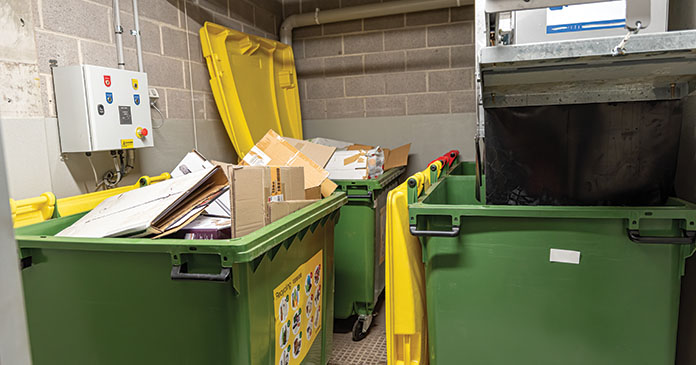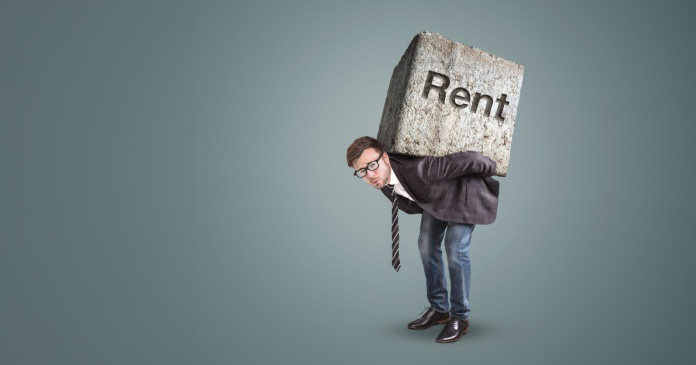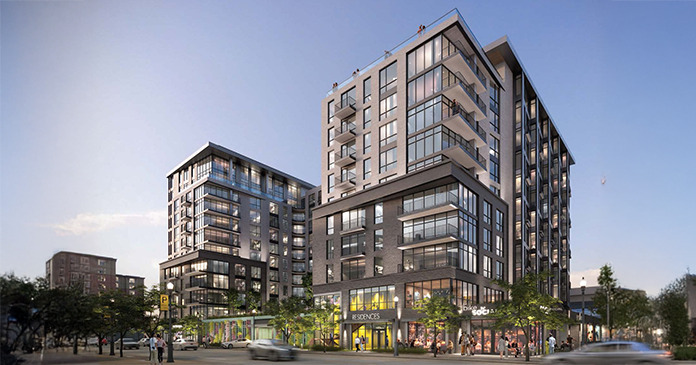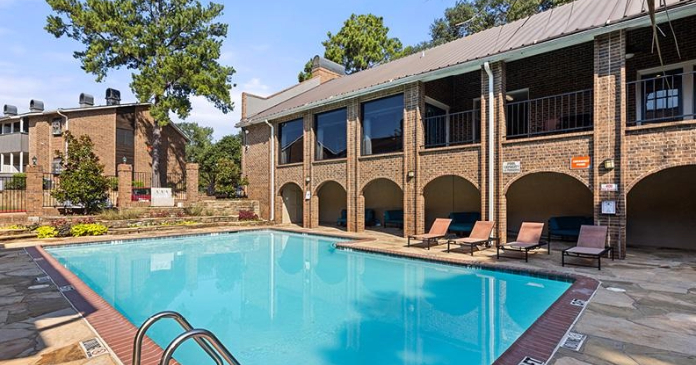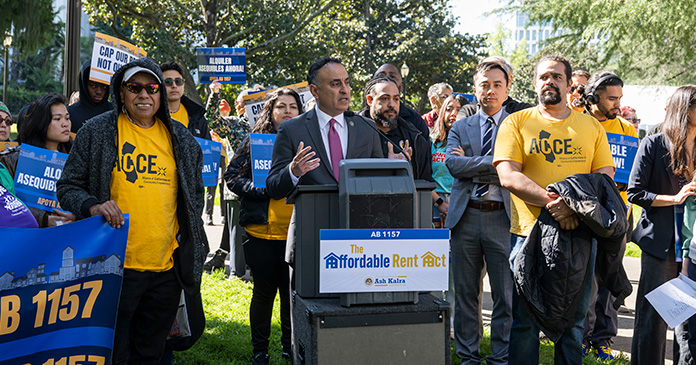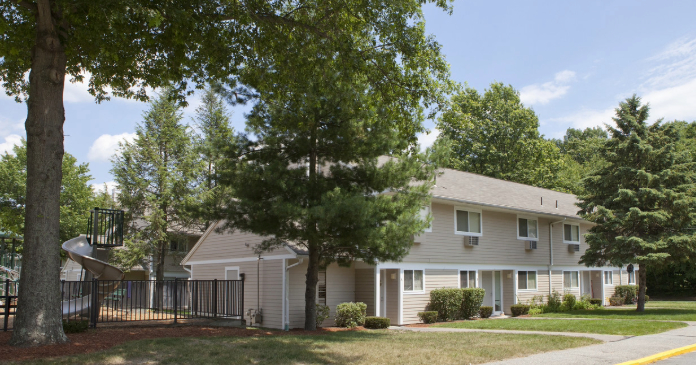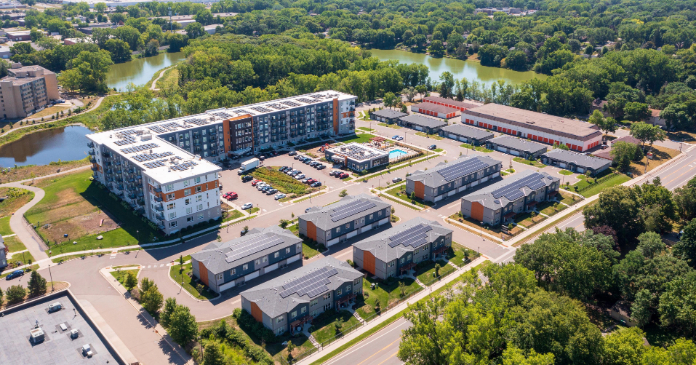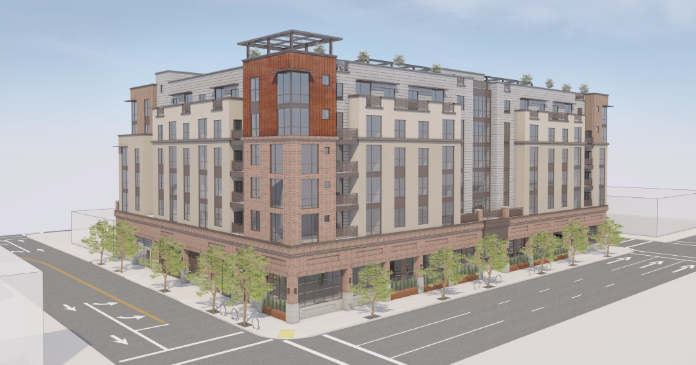Improve the profitability and safety of multifamily facilities with a well-designed trash and recycling area.
Waste disposal isn’t always top of mind when designing multifamily facilities, but properly configuring disposal and recycling areas and investing in the right compactor can cut costs and increase rental revenue, while also being a real draw for residents.
Today’s renters, particularly millennials, prioritize sustainability, which means that communities that offer a recycling program can often charge roughly $500 more in rent per unit over those that do not. Moreover, while recycling rates have increased in recent years, recycling is still a better deal than sending trash to the local landfill.
When designing multifamily facilities, developers often focus on where to place structural elements and parking spaces but treat waste disposal as an afterthought, which can create serious consequences in terms of safety.
Without adequate clearance, dumpsters and compactors can damage property, vehicles, or, worse, injure residents.
In some cases, unsecured dumpsters and compactors have pinned people against walls or cars, while unlocked receptacles provide an attractive nuisance to dumpster divers, who may fall in and injure themselves.
Poorly designed waste disposal areas can also be hazardous to your health, not to mention a turnoff. If dumpsters are placed too close to common areas, they may create an unsightly, smelly experience for residents and deter prospective residents. They may also attract rodents and other pests.
Waste disposal areas are also germ magnets. Due to COVID-19, people are generating more garbage from eating at home while at the same time looking for no-contact trash solutions. Locating dumpsters and bins in areas that are out of sight but easy to access will cut down on germs, noise pollution, and odor while preserving the visual appeal of your community.
Follow the rules
Beauty may be in the eye of the beholder, but legal requirements for waste disposal are non-negotiable. As urban areas become more congested, existing landfills are reaching capacity and many regions are running out of room to establish new ones.
To cope with mounting trash problems, many states and municipalities are mandating that property owners divert as much waste from landfills as possible. In these cases, recycling is the key to avoiding pricey overage fees as well as fines for non-compliance with regulations and local ordinances.
When designing or renovating a multifamily facility, figuring out how much space you need and staying in budget are usually top concerns.
To estimate costs, start with the number of units in your facility and then estimate how much garbage each unit generates. Once you know the amount of trash your facility produces, you can calculate how much space you’ll need to allocate for waste disposal and recycling. Next, configure your waste disposal area so that sanitation trucks can easily access dumpsters and compactors.
Enabling sanitation workers to fill trucks to capacity will reduce the frequency of trash pickups and lower your monthly trash and recycling costs.
Invest in the right equipment
To save space and dispose of trash as efficiently as possible, many multiunit facilities invest in compactors. Compactors vary by size and function, so evaluate your needs if you decide to invest in this equipment.
Whereas self-contained compactors are best for liquid waste (or organic waste that has the potential to become a liquid), stationary compactors are better for non-organic, dry trash and can be loaded onto trucks and hauled to nearby recycling facilities and landfills. Another popular choice are horizontal compactors; these hold up to 30 cubic yards of waste and attach to a chute, providing residents with no-contact, convenient waste disposal, particularly during C19.
You’ll need to decide whether to buy or lease your compactor. In many cases, purchasing a compactor is the better option because you own the equipment outright and control maintenance.
However, if you don’t want to assume responsibility for repairs or don’t have the budget to make a capital investment up front, leasing may be a better choice.
When placing stationary compactors, make sure there is enough clearance for building pipes and vehicles. Where possible, locate waste disposal at street level to give garbage and recycling trucks easy access.
Seek advice
If you already have your hands full staying on top of the many tasks that come with managing a multifamily housing facility, contracting with a third party for waste management can provide some welcome relief.
An experienced vendor can perform a trash audit to maximize recycling benefits, help you design a waste disposal area, and even train residents on how to how to recycle correctly. Ultimately, working with a qualified facility services provider allows you to focus on what really matters—improving quality of life for your residents.
When designing apartment communities, waste disposal is often treated as an afterthought. However, establishing a functional, convenient trash and recycling area can reduce costs for you and your residents, plus enhance the aesthetics, safety and profitability of your property.
Whether developing a new multifamily community or upgrading an existing project, figuring out how to dispose of waste early in the design phase saves money in the long run.
Author Danica Sierra, RWS Facility Services


